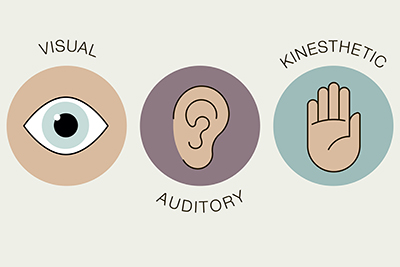One obstacle that many instructors—whether they’re in primary schooling, advanced graduate education, or training in the workplace— run into is getting through to an audience with a variety of learning styles.
Not everyone learns the same way. Tools that are extremely effective with some students may have minimal impact on others. Here, we take a quick look at the seven learning styles as discussed by Learning-Styles-Online.com.
Visual (Spatial)
Visual learners absorb information best when using pictures, images, and spatial understanding. Trainers may be able to effectively reach these individuals through illustrative diagrams, videos, animations, or demonstrations.
Aural (Auditory-Musical)
Aural learners like to listen and prefer to receive information from live presenters, while listening to podcasts, etc., to help them best capture and retain knowledge. The use of sound and/or music also appeals to these learners.
Verbal (Linguistic)
Verbal learners learn best using words in both speech and writing. Relaying what they’ve just been taught to others, for example, could aid these types of learners in absorbing information.
Physical (Kinesthetic)
Physical learners learn by using their bodies, hands, and sense of touch—for example, learning how to assemble a cabinet by actually assembling one.
Logical (Mathematical)
Logical learners prefer to use logic, reasoning, and systems. These learners could benefit from an explanation of why a process exists and why it exists the way it does. Understanding the context in which it logically addresses needs can help them retain that information.
Social (Interpersonal)
Social learners crave interactions with others to help them learn. They prefer being in groups or with other people.
Solitary (Intrapersonal)
Finally, some learners prefer to be on their own and alone. Solitary learners prefer to work by themselves and are more likely to take advantage of self-study opportunities.
It’s important to note that these are broad categories meant to help instructors better understand their audiences rather than precise definitions that can be accurately attributed to individuals.
Actual learners may exist on a spectrum between social and solitary, for example. Additionally, these categories can overlap—there may be visual learners who also learn well by using logic and in groups.
Understanding that not everyone absorbs knowledge the same way is key to effectively training a broad audience with different learning styles. The first step is to simply understand the different learning styles that are out there.
Learn more about the various types of learning style inventories (LSIs), including Kolb’s LSI and other relevant LSIs, when you attend the Workforce L&D session, “Learning Style Inventories: A Leading Strategy to Discern Your Adult Learners’ Preferences,” being held during HR World in Nashville, Tennessee, on November 14-15, 2019. This session will provide you with a roadmap to help you develop learning frameworks best suited for your workforce’s learning preferences, as well as provide insight into what to make of research suggesting that learning styles can’t be relied upon as widely as previously thought. Click here to learn more or to register today!


